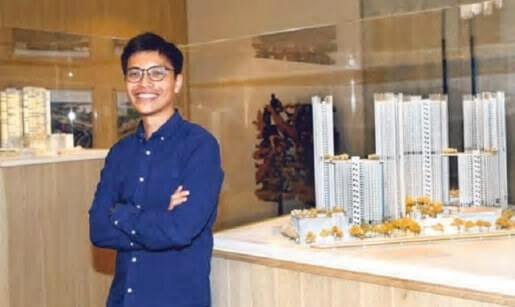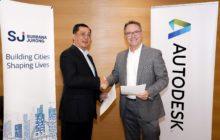An interview with Eugene Lim: Setting new benchmarks in architectural design

Eugene Lim, Surbana Jurong’s Architectural Associate from Singapore’s Building Information Modelling and Design Technology team (Urban Development 2), was featured in The Sunday Times on the topic ‘Jobs of Tomorrow’ on Sunday, 19 March 2017. It is part of a series sponsored by the Singapore University of Technology and Design (SUTD) which profiled recent graduates in future-ready jobs related to technology.
Eugene, who is among SUTD’s pioneer batch of graduates in the Master of Architecture programme, currently leads a team which builds automation capabilities for the design of residential housing.
He shared some highlights from the interview.
After a four-month internship with Surbana Jurong (SJ) which included a brief stint at US-based design software firm FLUX, you decided to stay on to pursue a career with SJ. What prompted your decision?
Eugene: I am passionate about technology and housing design, and SJ is a good fit for me as I am able to focus on both of my passions here. I can be thinking about automating processes one moment and studying the historical and socio-political influences on housing the next! My superiors are also one of the key deciding factors as they are open-minded and receptive to new solutions. They give me the flexibility and freedom to explore new ideas, which I appreciate.
Why is technology important in architecture?
Eugene: Automation is on the rise for many industries as we continue to look for ways to increase quality, reduce delivery time and operating costs. Architecture is no different. Architectural design has always been a lengthy and iterative process, and my team aims to make an impact to the industry by using automation to make design work less arduous and achieve higher accuracy in our projects.
What is your team working on that can disrupt the industry?
Eugene: Our team is leading research and development efforts in SJ to include automation within the design process. We have developed an application that aims to revolutionise the architectural design industry. The Housing Computational Design Tool, as we call it, combines architecture with computer programming, and is built to cut the building design process by up to half the time while reducing errors in our work. This technology can be scaled for other sectors such as commercial and industrial developments. When humans and machines work together, I believe it will bring about even higher quality master plans, buildings and homes for people.






